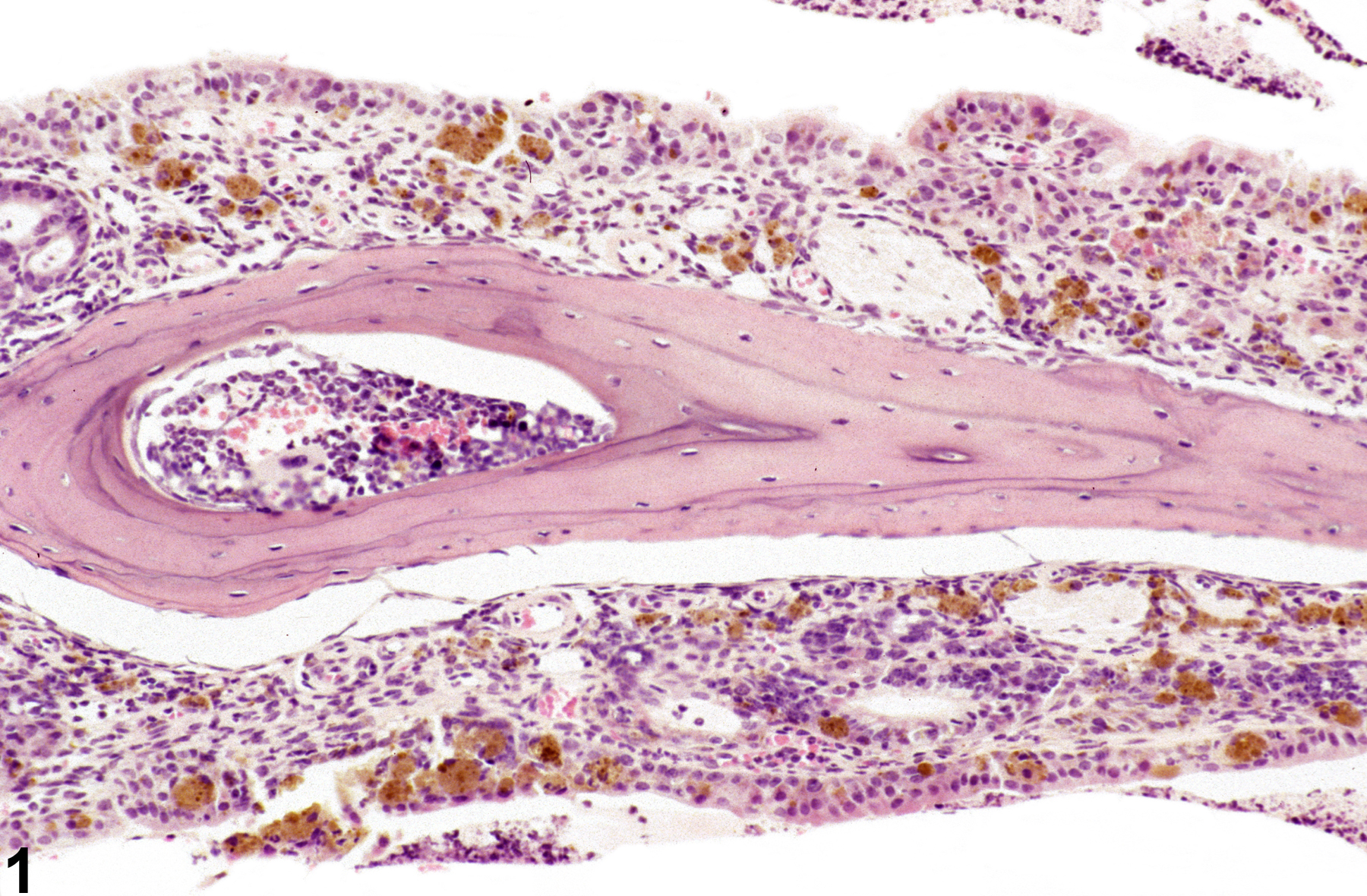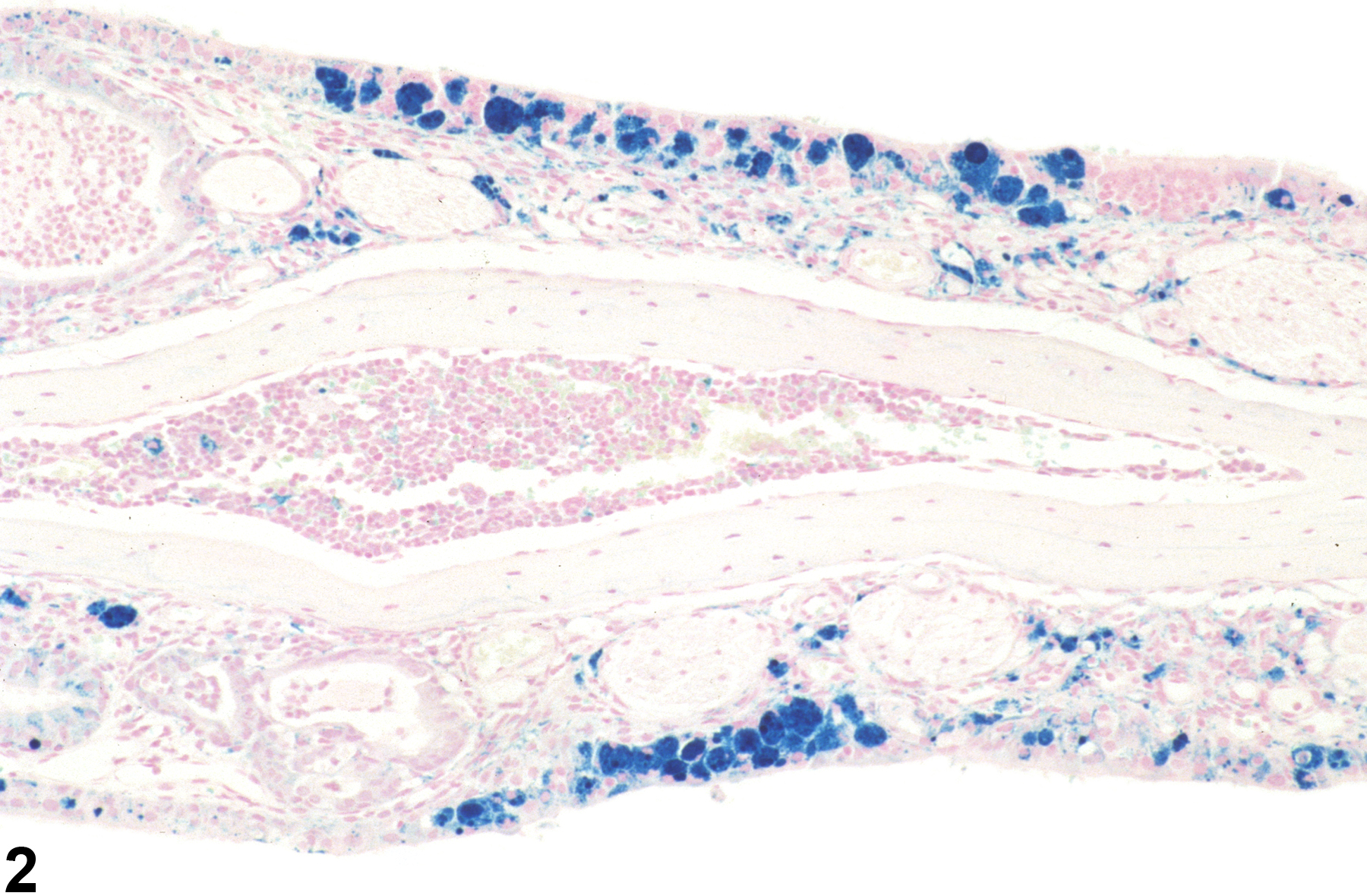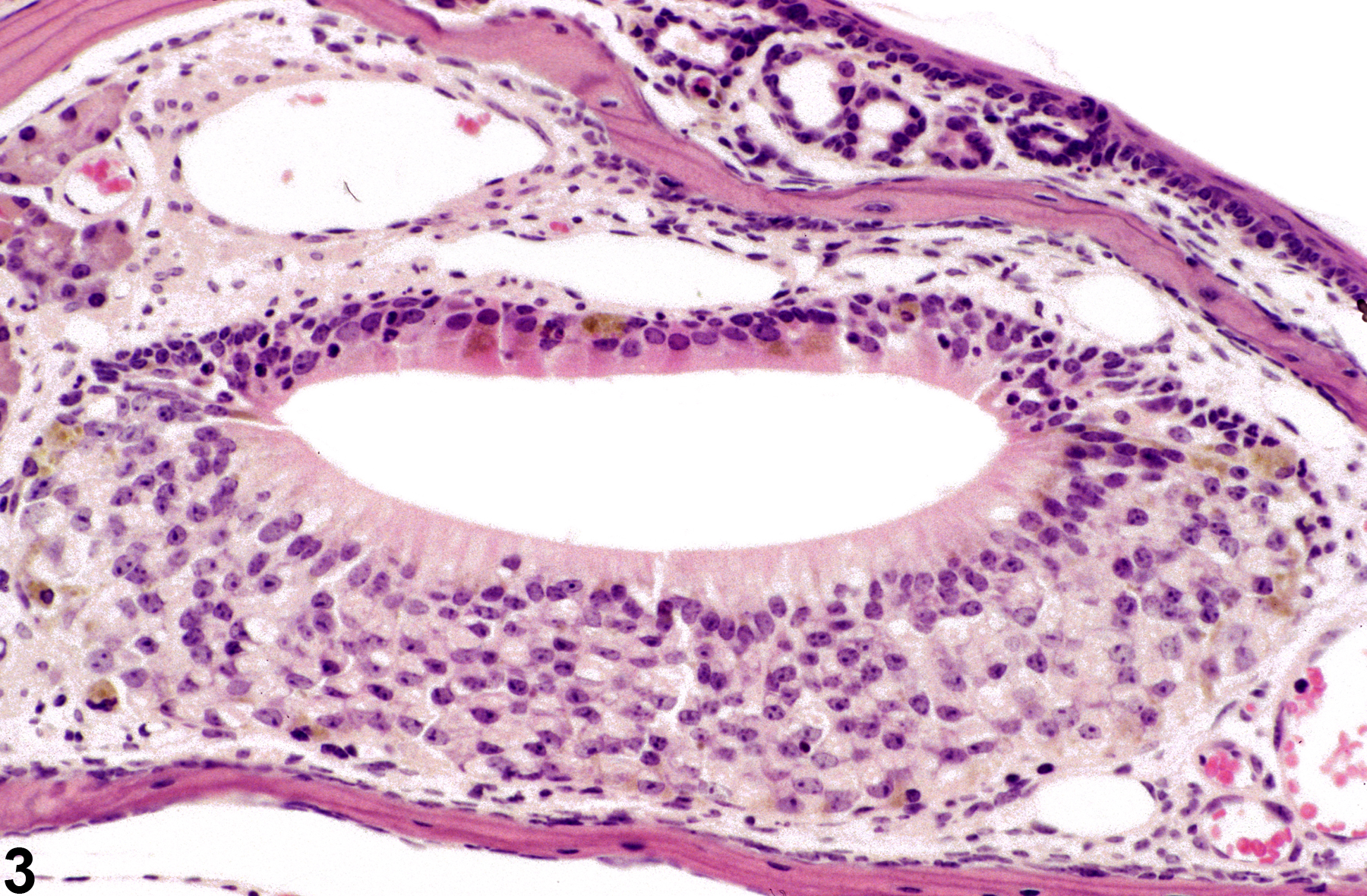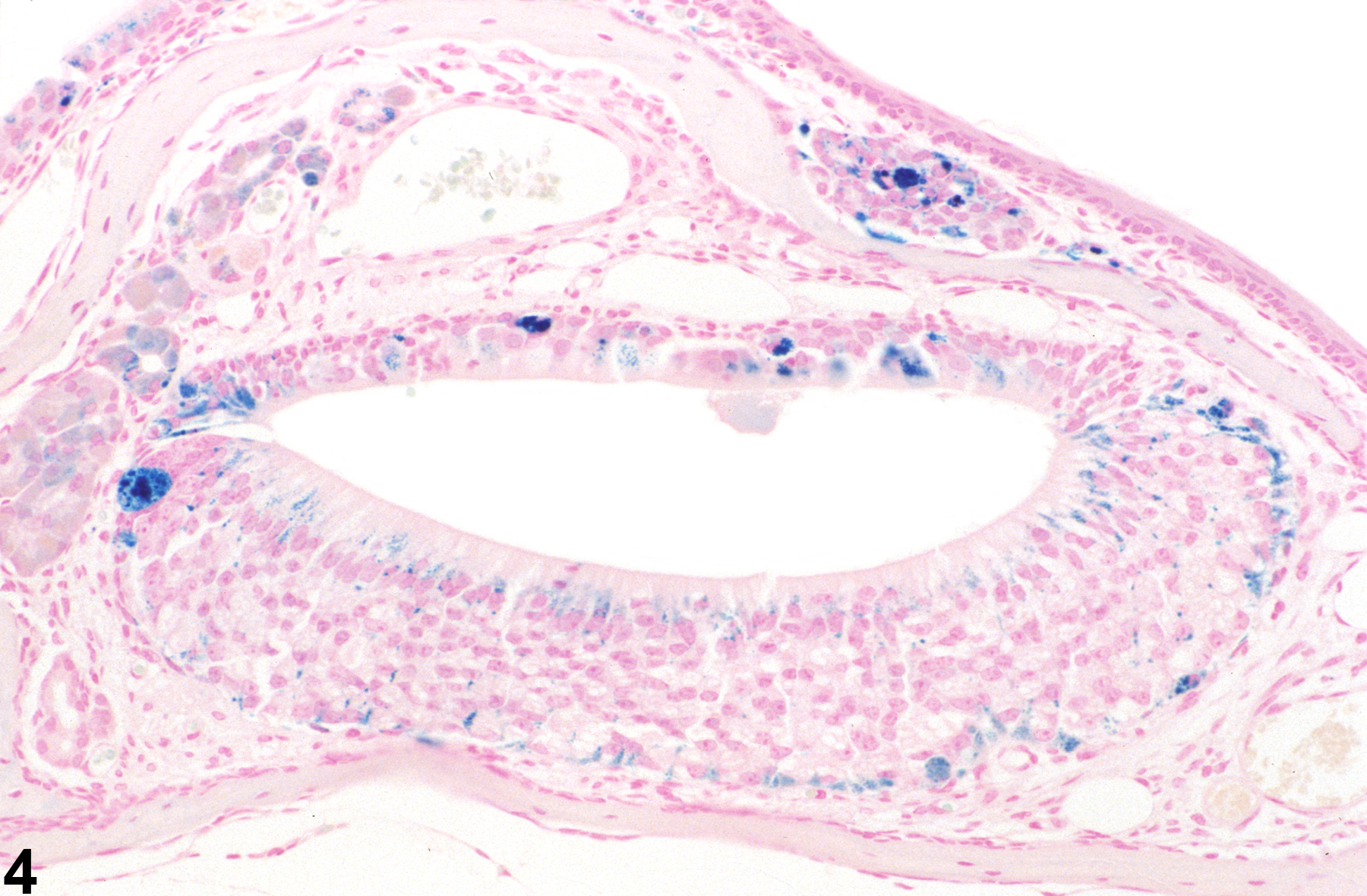Respiratory System
Nose - Pigment
Narrative
Nikula KJ, Sun JD, Barr EB, Bechtold WE, Haley PJ, Benson JM, Eidson AF, Burt DG, Dahl AR, RF Henderson RF, Chang IY, Mauderly JL, Dieter MP, Hobbs CH. 1993. Thirteen-week, repeated inhalation exposure of F344/N rats and B6C3F1 mice to ferrocene. Fundam Appl Toxicol 21:127-139.
Abstract: https://www.ncbi.nlm.nih.gov/pubmed/8405775
Nose, Respiratory epithelium - Pigment in a female B6C3F1/N mouse from a subchronic study. The mucosa and lamina propria of the turbinate contain pigment deposits.





